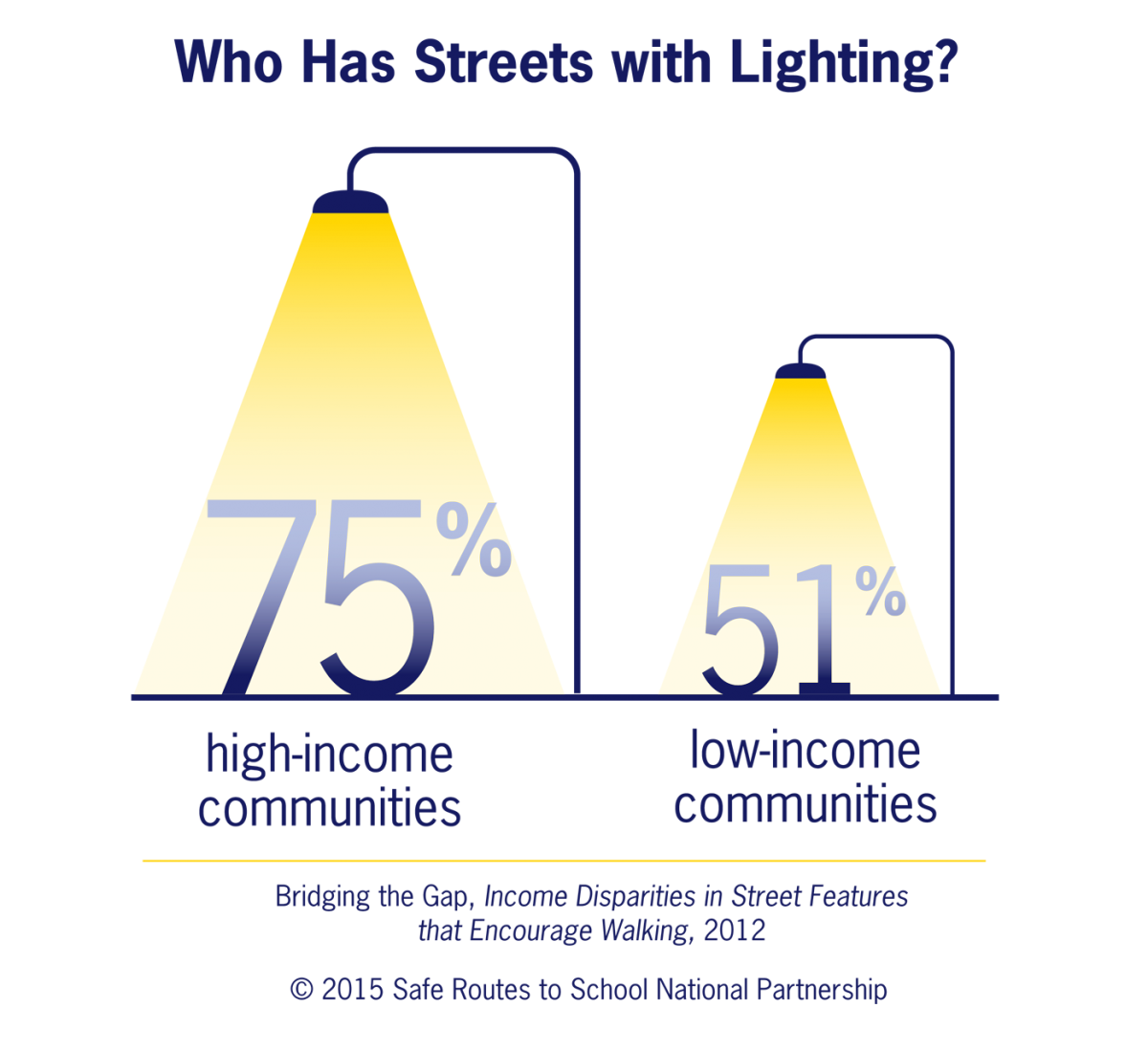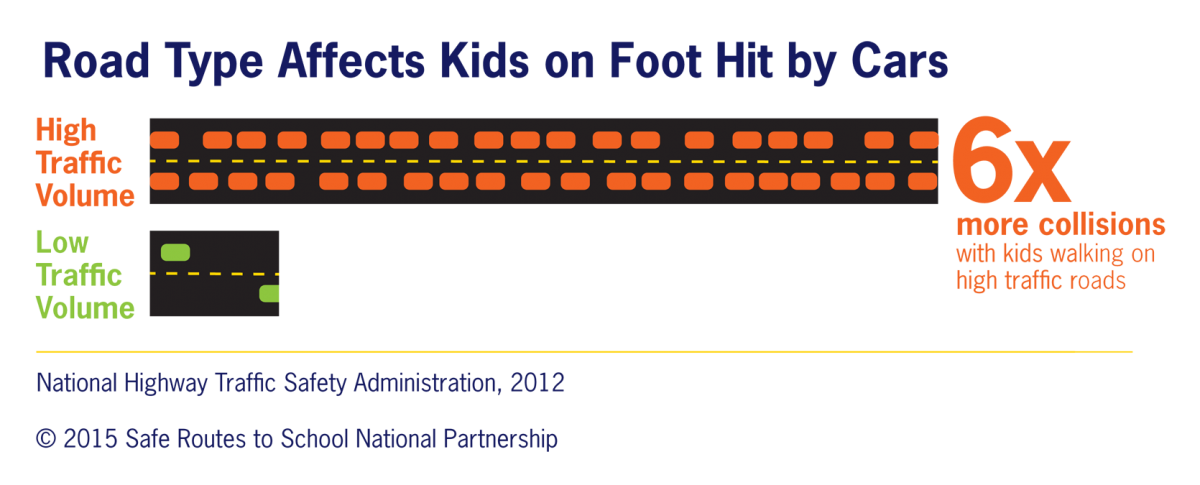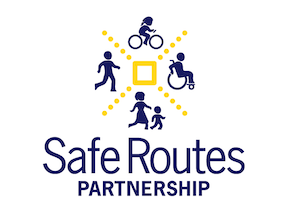Every Child Needs Safe Routes to School and Play: communities need to be designed in a way that supports routes to school, parks, and play for children and families that are safe. Parents need to feel comfortable and confident that children can make physical activity a part of their daily routine as they commute. Streets with sidewalks, crosswalks, bike paths, street lights, and slower speeds decrease the likelihood of collisions and make streets safer for everyone.
Making Streets and Communities More Equitable
The obstacles encountered in our car-centric society for those who do not have consistent access to a car affect low-income children and people of color more profoundly, making it more dangerous to get to school and work, and limiting access to daily needs.


- Low-income children are twice as likely to walk to school, but low-income communities have fewer sidewalks and bike lanes. Safe Routes to School is essential to improving kids' safety and health.
- Safe Routes to School helps with academic performance -- when kids get physical activity before class, they are more focused and ready to learn.
- Sixty-eight percent of schools receiving Safe Routes to School funds are low-income.
Making Kids Healthier and More Physically Active
Children today are simply not getting enough physical activity, contributing to growing rates of obesity and obesity-related health problems, such as diabetes. Safe Routes to School projects make it safer for more children to walk and bicycle to school, which will help address this obesity crisis among children by creating increases in physical activity.

- Over the past 40 years, rates of obesity have soared among children of all ages in the United States, and approximately 25 million children and adolescents—more than 33%—are now overweight or obese or at risk of becoming so.
Making Streets SAFEr for all
Safe Routes to School projects focus on infrastructure improvements, student traffic education, and driver enforcement that improve safety for children, many of whom already walk or bicycle in unsafe conditions.

- People walking are more than twice as likely to be struck by a vehicle in locations without sidewalks.
- In 2009, approximately 23,000 children ages 5-15 were injured and more than 250 were killed while walking or bicycling in the United States.
PHYSICAL ACTIVITY AND ACADEMIC PERFORMANCE
- When children get physical activity before class, they are more on task and fidget less. This is true for both girls and boys, and has been shown to be particularly beneficial for children who have the most trouble paying attention and those with attention deficit disorders.
- Programs that make it safe for kids to walk and bike to school can improve student attendance and reduce absenteeism. See how a Walking School Bus program helped one school in Providence, Rhode Island reduce absenteeism among 100% of participating students.

